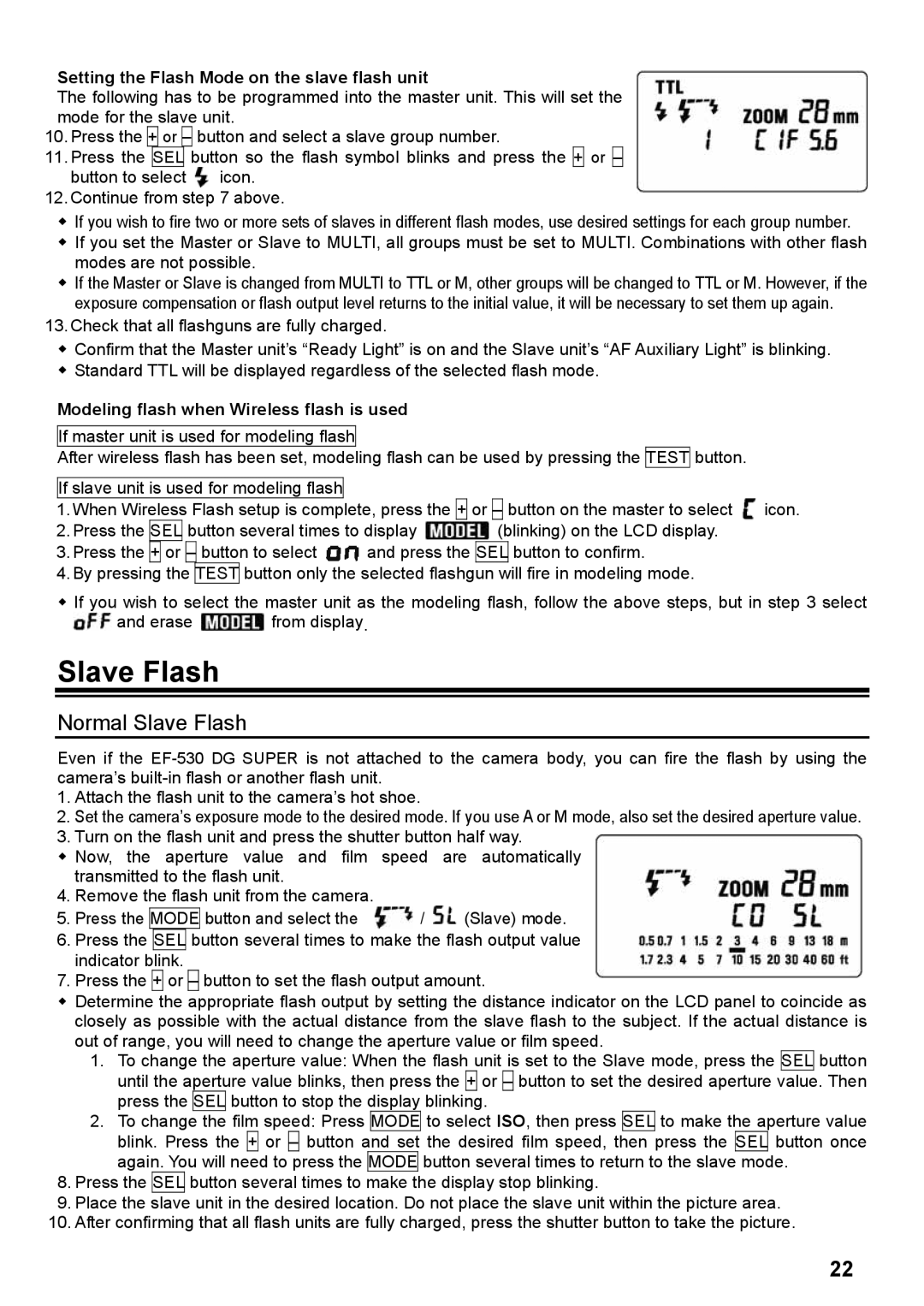EF-530 DG specifications
The Sigma EF-530 DG is a versatile and powerful external flash designed for both amateur and professional photographers seeking to enhance their photography experience. This flash unit stands out due to its robust features and compatibility with various camera systems, making it an essential tool for anyone looking to improve their lighting setup.One of the main features of the Sigma EF-530 DG is its high guide number of 53 at ISO 100, which provides ample power to illuminate even the most challenging shooting situations. With its tiltable and swiveling head, the flash allows photographers to bounce light off surfaces, producing softer shadows and a more natural appearance in portraits. This flexibility is essential for achieving desired lighting angles, making it suitable for events, weddings, or studio work.
The EF-530 DG employs advanced technologies such as wireless flash control, which enables off-camera flash shooting. This feature is particularly useful for creating dramatic effects and dynamic lighting in both indoor and outdoor environments. Photographers can use this function to achieve a professional look without the need for expensive and complex lighting setups.
Another significant characteristic of the EF-530 DG is its fast recycling time, which can be as quick as 4 seconds, depending on the power setting. This speed is crucial during fast-paced shooting scenarios, ensuring that photographers do not miss critical moments. Additionally, the unit supports high-speed sync, allowing for the use of fast shutter speeds without sacrificing flash power.
The flash also features TTL (Through The Lens) metering, which ensures accurate exposure in various lighting conditions. This technology automatically adjusts the flash output based on the camera settings and the scene being captured, delivering consistent results every time. Along with manual adjustment options, photographers have complete control over their lighting.
The Sigma EF-530 DG operates on four AA batteries, providing convenience and ease of use. Its lightweight design ensures that it is portable and easy to carry, making it an ideal choice for on-location shoots. With a user-friendly interface and an LCD panel, setting up and adjusting the flash is simple, allowing photographers to focus on their creative vision.
In summary, the Sigma EF-530 DG is a powerful and flexible flash unit packed with features that cater to a wide range of photography needs. Its high guide number, advanced wireless capabilities, fast recycling time, and TTL metering technology contribute to its reputation as a reliable lighting solution, making it a valuable addition to any photographer's toolkit.

